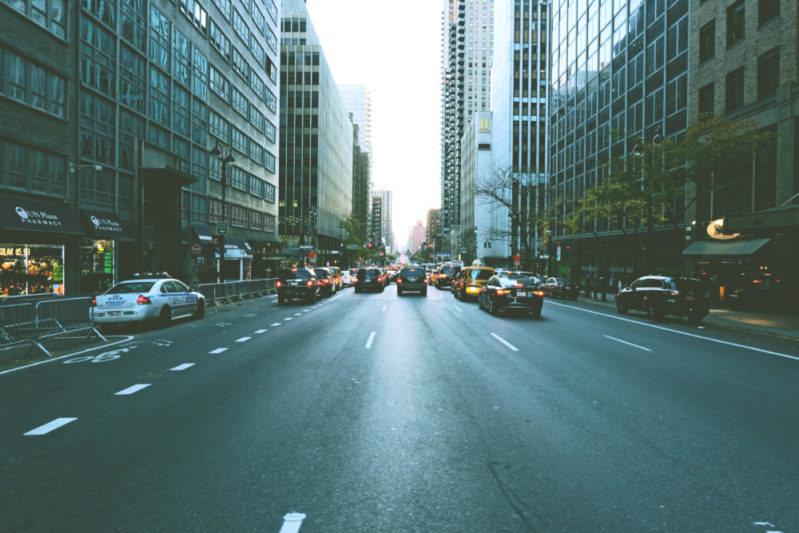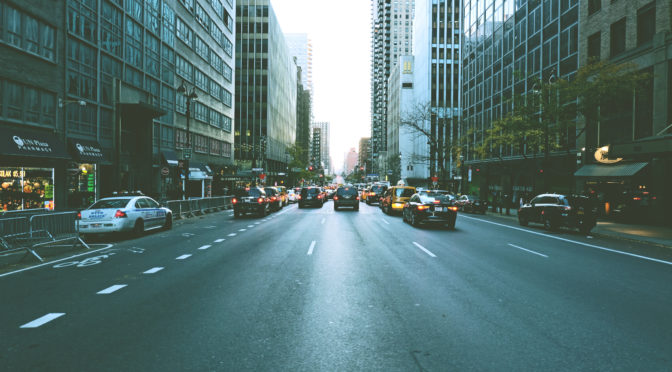
Which lane is safest in city driving or at city (<30 mph) speeds?
At city speeds (i.e., up to 30 mph), you’re nearly guaranteed to survive both head-on and side impact collisions with minimal injury, presuming you’re in a vehicle with good crash scores and frontal and side airbags. However, I’d recommend driving in the outermost lane (that closest to the shoulder) as much as possible, as this reduces the risks of head-on collisions with vehicles that may be speeding or that may have considerable more mass (e.g., school buses).
Which lane is safest on undivided high sped roads (e.g., 55 mph roads)?

Undivided high speed (i.e., above 45 mph) roads are the most dangerous kinds of roads frequently found in the United States; they have the highest fatality rates because they are diametric to best practices. Hurling two vehicles at each other and expecting them to pass each other with inches to spare without any kind of barrier whatsoever would sound like a bad idea to anyone in theory, yet this is precisely what these roads are in practice. Best practices indicate avoiding such roads if they have speed limits above 43 mph. Because speed limits in the US are based in 5 mph increments, this means avoiding undivided roads with speed limits above 40 mph whenever possible, especially if there’s only one available lane in each direction.
If you need to drive on such a road, do your best to drive at or below 43 mph. And if you have multiple lanes to choose from, choose the outermost one. This won’t keep you from getting into a head-on collision by a distracted or inebriated driver who drifts into your lane, but it might give you vital seconds to slow down or steer out of the way, and sometimes, that’s all it takes to make the difference between life and death.
Which lane is safest on divided high speed roads (e.g., interstates)?
On divided (protected) roads, the biggest danger–that of oncoming traffic–is ideally eliminated or at least severely reduced. However, I still recommend the outermost lane because it’s the lane that will allow you to reach the shoulder most easily if you have vehicle trouble or if you need to avoid a vehicle traveling dangerously (e.g., speeding, swerving, etc) behind you. Such vehicles are additionally more likely to be using the innermost lanes, since those are the higher speed and passing lanes. Using the outermost lane reduces your risks of getting mixed up in things you want to stay away from.
Why do you recommend the outermost lane over the center lane?
I recommend the outermost lane in nearly every situation over the center or innermost lanes because the outermost lane is most likely to be the slowest lanes, and as discussed above, slow is safer. Additionally, if you’re unlucky enough to get bumped by a vehicle passing you while in the center lane, that can send you into a lane on your right or a lane on your left; neither of which is a desirable situation. When you’re in the outermost lane, the road works with you as a natural barrier and you also can make a much quicker exit in an emergency situation.
But doesn’t the outer lane place you at greater risk for side impacts?
No. Studies have shown that the risk of a side impact is roughly equal on both sides of a vehicle, and I also think the risk of side impacts are roughly equal no matter which lane you’re in. However, what’s certain is that if you’re hit while on an undivided road, there’s a 50-50 chance that the impact will send you toward or into oncoming traffic. The farther you are from that oncoming traffic (by being in the outermost lane), the lower your odds are of suffering a second severe impact.
In conclusion, while there are a lot of circumstances we have little to no control over when driving (e.g., 50% of auto fatalities among vehicles involve multiple vehicles), there are a great many we can influence by when and how we drive. Learn and live best practices. The life you save may not just be your own, but those of many you love (and many loved by others).
If you find the information on car safety, recommended car seats, and car seat reviews on this car seat blog helpful, you can shop through this Amazon link for any purchases, car seat-related or not. Canadians can shop through this link for Canadian purchases.


